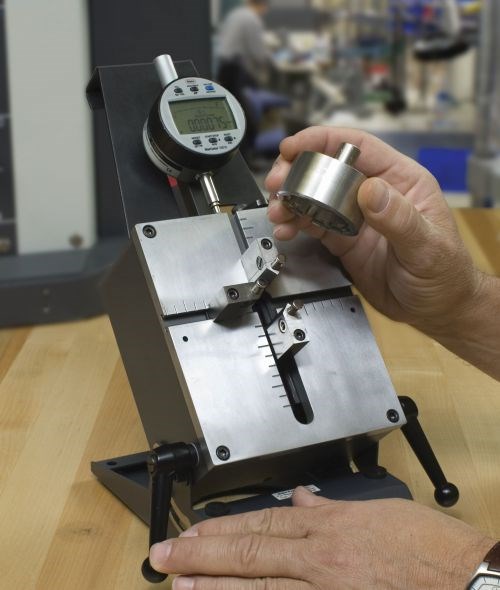Digital Indicators: Having it Your Way
Dedicated devices may be the most secure way to ensure trouble-free results.
Share



In many applications, digital indicators are becoming so powerful that they are taking on the performance and features of bench amplifiers. It is not uncommon to find features such as dynamic measurements, multiple factors, unilateral tolerances, different output formats and microinch resolutions in higher-end digital indicators. And while they may be high-end for digital indicators, they are still about a quarter of the price of a bench amplifier and probe.
This, of course, is a great benefit for the company, which can get a very powerful indicating device to replace a bench amplifier or upgrade a dial indicator at a very cost-effective price. But for the end user, the person at the company who actually has to use the new digital indicator, this change may be a bit more complicated.
For the user, upgrading from a dial to a digital indicator may require a sudden technology shift. For years, the operator had been interpreting the pointer’s position to read the measurement. In many ways, the human brain is like an analog device, and it can often gather more information, more quickly from an analog readout. I have seen quality control inspectors make consistently accurate go/no-go readings with dial indicators even before the pointer had stopped moving. They can tell at a glance approximately where the pointer will stop, and in many applications, that is close enough.
Skilled operators can also “split grads” with dial indicators—that is, resolve the pointer’s position to an accuracy of about one-fifth of the gage’s stated minimum graduation value. And analog dials enable the machinist to observe the direction in which his process is headed. If reading number 1 indicates one-fifth of a grad over zero, reading number 2 is precisely zero and reading number 3 is one-fifth of a grad below zero, the user may be able to draw valuable conclusions about the condition of his tool. In other words, dials can provide more information than simply the dimensional measurement. An early digital readout would have read zero in all three cases, depriving the user of this additional information.
Give that same operator a digital device that is basically a compacted bench amplifier with numerous buttons, flipping digits, dynamic memories and a bunch of symbols on the dial, and he may suddenly go into technology shock. This may be true both for an operator moving to digital indicators or for newly employed gage technicians as they start working with new and more powerful measuring products.
Many manufacturers of digital indicators have tried to take control of all this flexibility from the operator by setting passwords or codes as part of the digital indicator’s setup process. The idea here is that once the digital indicator is set up with its tolerances, measuring direction, resolution, measuring mode, multiplier, etc., the password will in effect lock the operator out and prevent him from accidentally changing the setup of the indicator and potentially affecting the measurement results. This “soft” protection is OK for many applications. Many shopfloor operators are pretty inquisitive, however, and they sometimes bypass this soft security. Suddenly, the setup of the gage changes and the results are affected.
For life-critical industries like medical or aerospace, having soft security may not be good enough, however. What’s really needed is a digital indicator configured and dedicated to the specific application. In other words, it’s ordered specifically for the application, with the desired resolution, measuring direction and multiplier, for example. It’s like getting an indicator “your way.” This becomes a factory-set process in which there is no way for an operator to change the indicator’s function. In effect, it is hard-wired for the application.
This concept is not for everyone. As with anything “custom,” it’s apt to cost more, and the delivery will not be off the shelf. But in a critical measuring process where any setup errors may affect the outcome, special dedicated digital indicators may be the most secure means for ensuring trouble-free results.
Read Next
OEM Tour Video: Lean Manufacturing for Measurement and Metrology
How can a facility that requires manual work for some long-standing parts be made more efficient? Join us as we look inside The L. S. Starrett Company’s headquarters in Athol, Massachusetts, and see how this long-established OEM is updating its processes.
Read More

















.png;maxWidth=300;quality=90)







